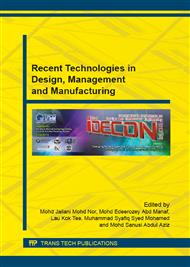p.584
p.589
p.594
p.599
p.604
p.609
p.615
p.619
p.624
Harnessing Buoyancy Force to Operate Mini Cost-Saving Water Treatment Plant for River Inlets
Abstract:
River pollution has been a global issue and the consequences of polluted rivers are significantly affecting human health and well-being. Meanwhile, water treatment plants (WTP) are often related to high energy cost. Nevertheless, there is an abundance of hydraulic energy stored in the flowing water, which can be converted into mechanical energy to operate the WTP. The focus of this paper is to describe an innovative method of harnessing buoyancy force to save the energy cost of commonly used motorized equipment in the conventional WTP. The benefit of this product is to create a green environment by utilizing a readily available hydraulic energy and restoring river water quality. This study has shown that a cost-saving water treatment plant operating based on buoyancy force is feasible. This product enables electricity cost to be minimized while treating river water at the same time.
Info:
Periodical:
Pages:
604-608
Citation:
Online since:
May 2015
Authors:
Keywords:
Price:
Сopyright:
© 2015 Trans Tech Publications Ltd. All Rights Reserved
Share:
Citation:


